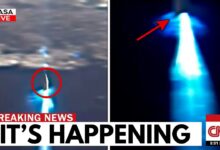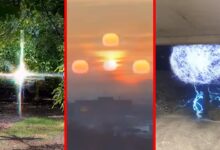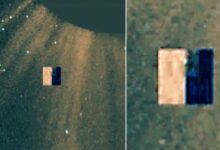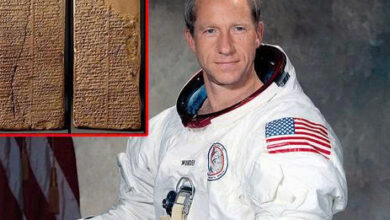Voyager 1 Just Crossed Into a Region of Space No One Expected to Be There
Voyager 1’s Astonishing Discovery: The Magnetic Wall at the Edge of the Solar System
Fifteen billion miles from Earth, NASA’s Voyager 1 has entered a region no one expected. What it found may force scientists to rewrite everything we thought we knew about the edge of our solar system.
In late 2020, after decades of travel through deep space, Voyager 1’s instruments recorded something extraordinary — an abrupt 8–10% spike in magnetic field strength. This invisible “wall” was unlike anything predicted by existing space models. A NASA researcher called it a magnetic pressure front, something that seemed to push back against the spacecraft, defying expectations of uniformity in interstellar space.
For nearly three years, this heightened magnetic reading persisted, accompanied by unusual plasma densities and strange particle behavior. Scientists believe Voyager may have entered a highly magnetized pocket of space — perhaps the remnant of an ancient supernova explosion, a compressed bubble of plasma left behind millions of years ago. If true, this would be the first direct sampling of such a structure by humanity.
Two Competing Theories: Ancient Supernova or Solar Shockwave
The first theory suggests Voyager has encountered a fragment of a supernova remnant embedded within the local interstellar cloud, a region of denser gas and dust stretching some 30 light-years across. The solar system itself resides within this cloud, which is inside a larger cavity called the local bubble, carved out by multiple ancient supernovae. Voyager’s data could represent the ghostly fingerprint of one of those cataclysmic stellar deaths.
The second theory points inward — toward our own sun. A group of physicists believes Voyager may have run into the lingering “pileup” of solar storms from 2014–2017. These massive coronal mass ejections, traveling outward for years, could have merged into a wall of compressed plasma that only now reached Voyager’s position. Timing analyses show a close match between these solar events and the spacecraft’s 2020–2022 magnetic spike.
To test this, scientists are watching Voyager 2, which exited the heliosphere in 2018 along a different path. If Voyager 2 encounters a similar magnetic surge in the coming years, it would lend strong support to the solar shockwave explanation.
The Interstellar Hum: Space Is Not Silent
Then came another surprise — a faint, continuous cosmic hum detected by Voyager’s plasma wave instrument in 2021. This was not a signal from alien civilizations, but a persistent vibration in the interstellar medium itself. The sound, existing within a narrow frequency band, revealed that “empty” space is alive with plasma oscillations.
Remarkably, the hum intensified as Voyager entered the magnetic pressure zone, confirming that it had crossed into a distinct region of space. This discovery suggests interstellar space is not static — it is textured, dynamic, and perhaps even has “weather patterns.”
Magnetic Highways: Could Stars Be Connected?
Voyager’s latest readings have revived interest in its earlier discovery of the magnetic highway in 2012 — a region where the sun’s magnetic field connected directly to the interstellar field, allowing charged particles to stream freely. Scientists now wonder if this was part of something much larger: a vast network of magnetic tunnels linking star systems, like cosmic veins.
If true, the boundaries between stellar systems might not be walls at all — but gateways for matter, energy, and perhaps even the chemical seeds of life to travel across the galaxy.
Implications for Humanity
These findings have enormous significance for the future of space exploration. The heliosphere — our solar system’s protective magnetic bubble — may not be a solid shield but a selective filter. The magnetic structures Voyager encountered could either amplify radiation hazards or create safer travel corridors for future deep-space missions.
Mapping these regions is crucial for protecting astronauts and spacecraft electronics from dangerous cosmic rays. The data may also help us understand how solar storms affect Earth’s satellites and communication systems.
Voyager’s Unfinished Mission
Launched in 1977, Voyager 1 has been rewriting space science for nearly five decades. From the termination shock in 2004, to the stagnation region in 2011, to the magnetic highway in 2012, it has revealed layer after layer of unexpected complexity at our solar system’s edge.
Now, as its nuclear power source slowly fades — with silence expected around 2030 — every bit of data it sends is priceless. Voyager 1 is not just a relic of the space race; it is humanity’s first interstellar field scientist, mapping the true structure of our cosmic neighborhood.
In the end, the “edge” of the solar system wasn’t a border at all — it was a gateway. What lies beyond may be stranger, richer, and more interconnected than we ever imagined.




